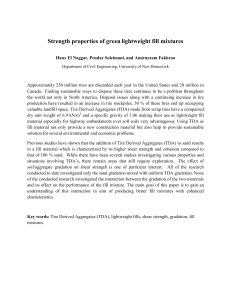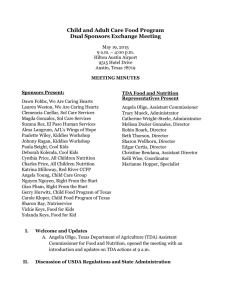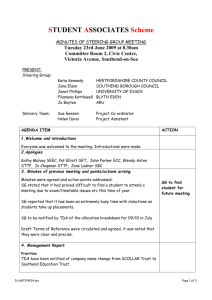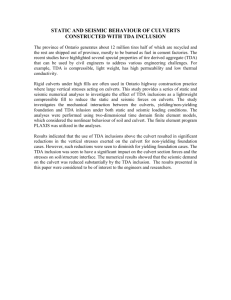RESEARCH SERVICES & LIBRARY Updating MnDOT Guidance for Using
advertisement
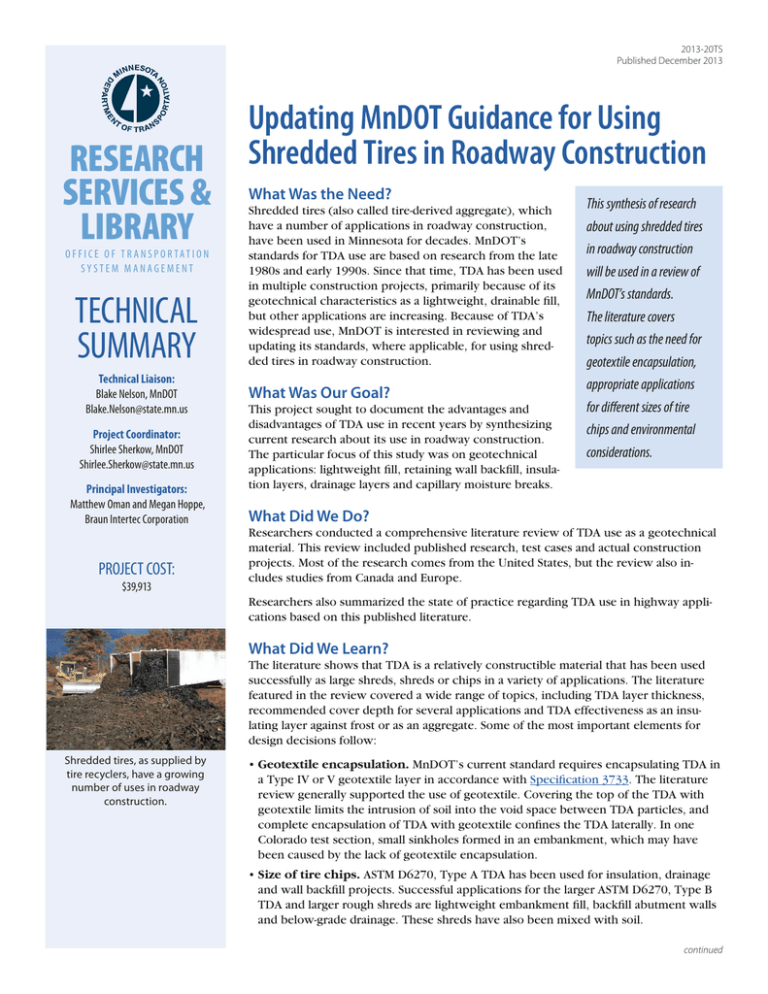
2013-20TS Published December 2013 RESEARCH SERVICES & LIBRARY O FFI C E O F T R A NSP O R TAT I O N SYSTEM MANAGEMENT TECHNICAL SUMMARY Technical Liaison: Blake Nelson, MnDOT Blake.Nelson@state.mn.us Project Coordinator: Shirlee Sherkow, MnDOT Shirlee.Sherkow@state.mn.us Principal Investigators: Matthew Oman and Megan Hoppe, Braun Intertec Corporation PROJECT COST: $39,913 Updating MnDOT Guidance for Using Shredded Tires in Roadway Construction What Was the Need? Shredded tires (also called tire-derived aggregate), which have a number of applications in roadway construction, have been used in Minnesota for decades. MnDOT’s standards for TDA use are based on research from the late 1980s and early 1990s. Since that time, TDA has been used in multiple construction projects, primarily because of its geotechnical characteristics as a lightweight, drainable fill, but other applications are increasing. Because of TDA’s widespread use, MnDOT is interested in reviewing and updating its standards, where applicable, for using shredded tires in roadway construction. What Was Our Goal? This project sought to document the advantages and disadvantages of TDA use in recent years by synthesizing current research about its use in roadway construction. The particular focus of this study was on geotechnical applications: lightweight fill, retaining wall backfill, insulation layers, drainage layers and capillary moisture breaks. This synthesis of research about using shredded tires in roadway construction will be used in a review of MnDOT’s standards. The literature covers topics such as the need for geotextile encapsulation, appropriate applications for different sizes of tire chips and environmental considerations. What Did We Do? Researchers conducted a comprehensive literature review of TDA use as a geotechnical material. This review included published research, test cases and actual construction projects. Most of the research comes from the United States, but the review also includes studies from Canada and Europe. Researchers also summarized the state of practice regarding TDA use in highway applications based on this published literature. What Did We Learn? The literature shows that TDA is a relatively constructible material that has been used successfully as large shreds, shreds or chips in a variety of applications. The literature featured in the review covered a wide range of topics, including TDA layer thickness, recommended cover depth for several applications and TDA effectiveness as an insulating layer against frost or as an aggregate. Some of the most important elements for design decisions follow: Shredded tires, as supplied by tire recyclers, have a growing number of uses in roadway construction. • Geotextile encapsulation. MnDOT’s current standard requires encapsulating TDA in a Type IV or V geotextile layer in accordance with Specification 3733. The literature review generally supported the use of geotextile. Covering the top of the TDA with geotextile limits the intrusion of soil into the void space between TDA particles, and complete encapsulation of TDA with geotextile confines the TDA laterally. In one Colorado test section, small sinkholes formed in an embankment, which may have been caused by the lack of geotextile encapsulation. • Size of tire chips. ASTM D6270, Type A TDA has been used for insulation, drainage and wall backfill projects. Successful applications for the larger ASTM D6270, Type B TDA and larger rough shreds are lightweight embankment fill, backfill abutment walls and below-grade drainage. These shreds have also been mixed with soil. continued “Lots of research went into this document. It’s broad-based and wide-ranging, not just one opinion from a single consultant, and brings the work of national and international experts together in one place to make that information easy to use.” —Blake Nelson, Geotechnologies Engineer, MnDOT Office of Materials and Road Research “A lot of the information in MnDOT’s current specifications is based on research available in the early ’90s. This report incorporates a lot of new information.” —Megan Hoppe, Project Engineer, Braun Intertec Corporation Produced by CTC & Associates for: Minnesota Department of Transportation Research Services & Library MS 330, First Floor 395 John Ireland Blvd. St. Paul, MN 55155-1899 651-366-3780 www.mndot.gov/research This research supports MnDOT’s requirements that TDA be encapsulated in a geotextile to confine the TDA laterally and minimize the intrusion of soil into the TDA layer. Researchers found one project where the lack of a geotextile was blamed for small sinkholes that developed. • Environmental concerns. In the 1990s, TDA’s impact on water quality was a significant concern. While laboratory studies suggest that in extreme conditions, chemicals from TDA can leach into groundwater in concentrations that exceed drinking water standards, field studies conducted since then—including a MnDOT project—have mitigated this concern somewhat and indicate that TDA fills should not affect off-site soil or groundwater quality. TDA use in water, however, is still not recommended. This project also summarized the physical properties of TDA materials for use in design. While specific properties vary with chip size and material, typical ranges for pavement design parameters follow: dry density (generally 35 to 60 pounds per cubic foot, about one-third to one-half of typical soil); specific gravity (1.13 to 1.36, depending on metal content); compressibility (about 20 to 30 percent strain under typical loading conditions); thermal conductivity (low because of the low thermal conductivity of rubber); and permeability (high). What’s Next? MnDOT will use these findings as it updates its guidance for using shredded tires in roadway construction. Minnesota law explicitly references that guidance, so changes to it will impact state regulations. MnDOT is also coordinating with the Minnesota Pollution Control Agency, whose standards cover both private and public projects (unlike MnDOT, whose focus is on public projects). These efforts will attempt to bring MnDOT and MPCA standards and state law into agreement. While the literature review successfully synthesizes published research, additional information that is unpublished is probably available. Contacting tire recyclers to learn about data that they have collected about using shredded tires in infiltration media or surveying DOTs nationwide to collect information about how they use shredded tires may both be warranted. This Technical Summary pertains to Report 2013-20, “Use of Tire Derived Products (TDP) in Roadway Construction,” published June 2013. The full report can be accessed at http://www.lrrb.org/PDF/201320.pdf.

